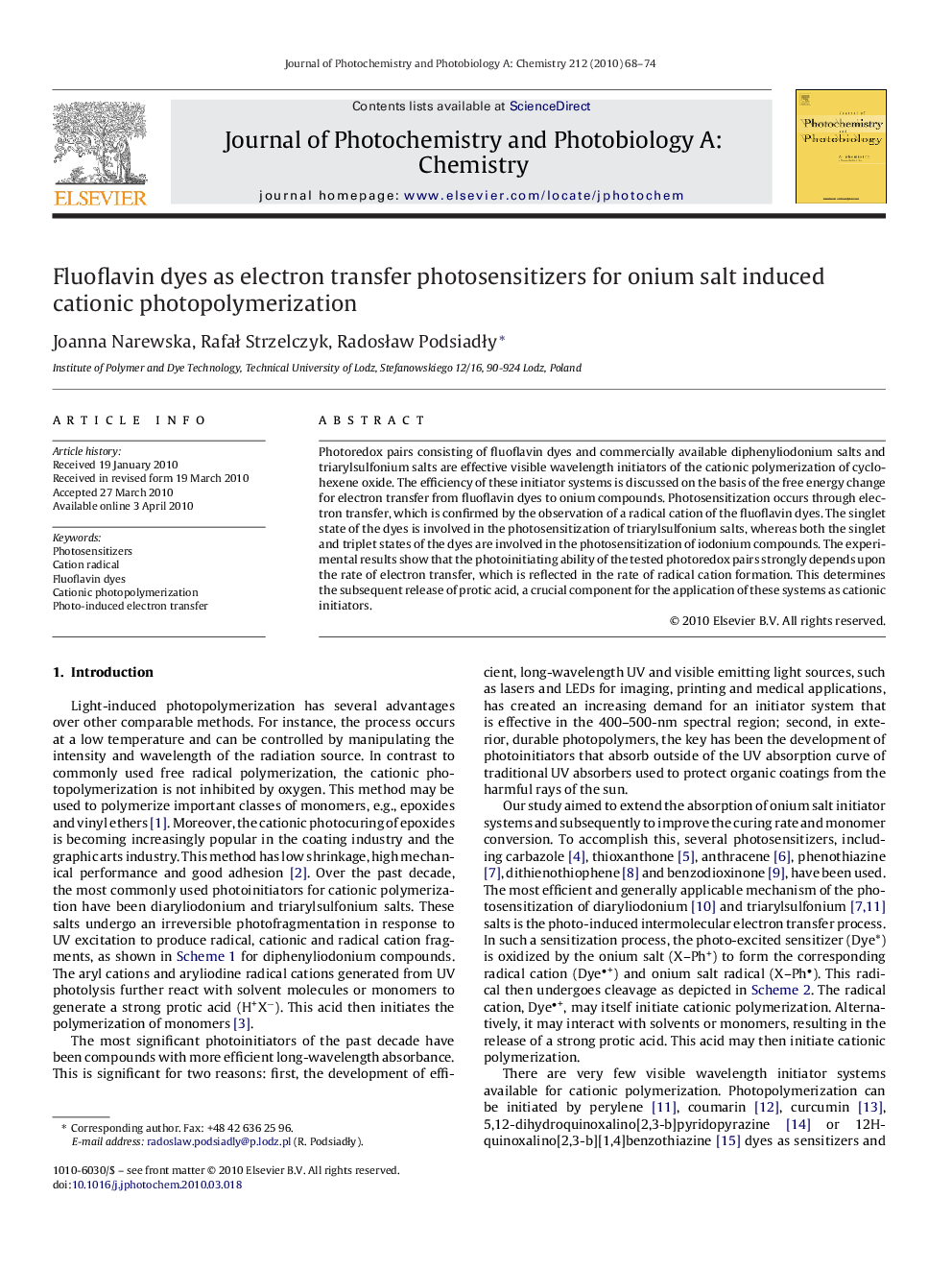| Article ID | Journal | Published Year | Pages | File Type |
|---|---|---|---|---|
| 27930 | Journal of Photochemistry and Photobiology A: Chemistry | 2010 | 7 Pages |
Photoredox pairs consisting of fluoflavin dyes and commercially available diphenyliodonium salts and triarylsulfonium salts are effective visible wavelength initiators of the cationic polymerization of cyclohexene oxide. The efficiency of these initiator systems is discussed on the basis of the free energy change for electron transfer from fluoflavin dyes to onium compounds. Photosensitization occurs through electron transfer, which is confirmed by the observation of a radical cation of the fluoflavin dyes. The singlet state of the dyes is involved in the photosensitization of triarylsulfonium salts, whereas both the singlet and triplet states of the dyes are involved in the photosensitization of iodonium compounds. The experimental results show that the photoinitiating ability of the tested photoredox pairs strongly depends upon the rate of electron transfer, which is reflected in the rate of radical cation formation. This determines the subsequent release of protic acid, a crucial component for the application of these systems as cationic initiators.
